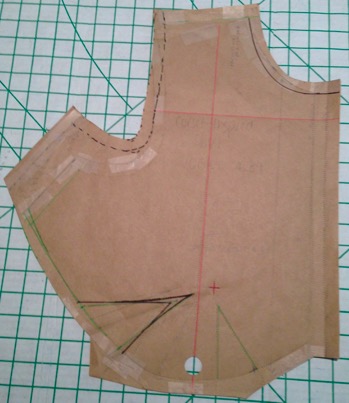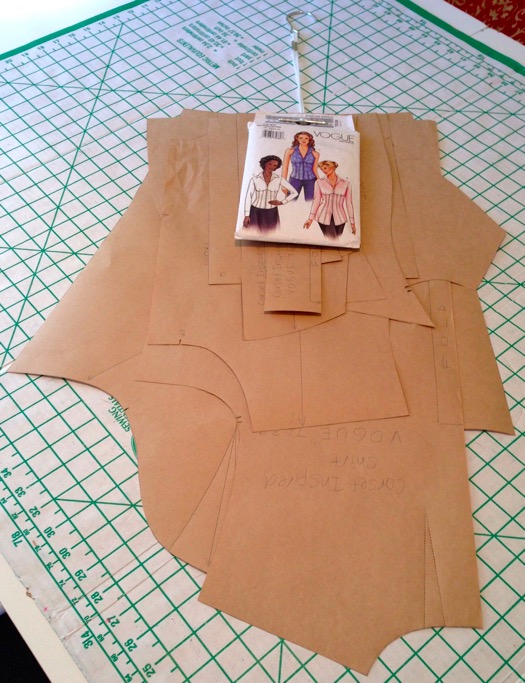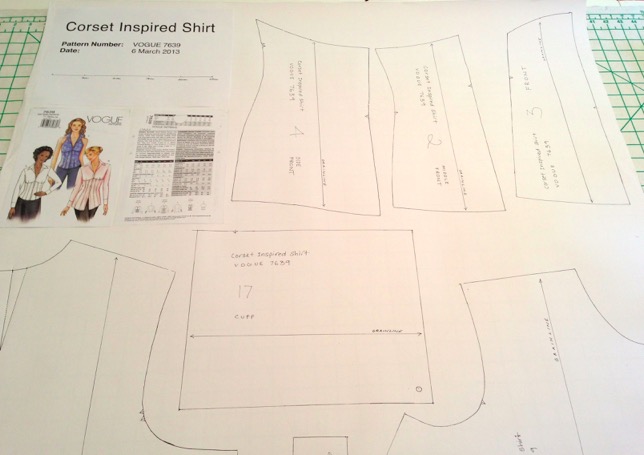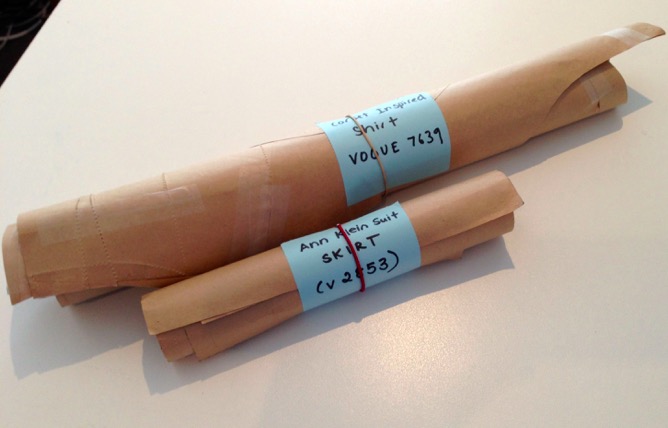Making Backups

So … I’ve decided that I need ‘backups’.
If you are familiar with software, and data, you may have heard about the 3-2-1 rule. You need 3 copies, in at least 2 different formats and 1 of those copies should be stored offsite. I’ve decided to use that to guide my pattern backup strategy.
My starting point is the pattern pieces that I have been working with, and modifying, in the cycle of muslin, fitting, pattern alteration then new muslin. These pattern pieces are covered with the lengthwise and crosswise grain line markings (pink highlighter), holes from the tracer wheel (created when I traced the markings using wax paper), green highlighter to mark stitch lines that were updated following the first muslin round, black marker for the stitch lines that were updated during the second muslin round plus miscellaneous additional paper with mountains of sellotape.
Primary Pattern
My first step is to trace my, well loved, perfected pattern pieces on to brown pattern paper.

I transfer all the standard pattern markings (i.e., notches, darts etc) but no longer need the grain and cross grain lines that I used for the muslins.
I use my Pattern Punch to create holes in all the pattern pieces and then hang the pattern pieces up, along with the original pattern, using a Pattern Hook.
This will be the primary pattern I use to cut out the garment.
PDF Backup
My next step is to trace original pattern pieces again but this time on to wide white copier paper using a felt tip pen.

This copy is then fed into a commercial scanner and converted into a PDF file. This service is relatively inexpensive. Mailboxes Etc in Sydney charges approximately $10 per pattern. The cost depends on the length that is being scanned. So, if your pattern pieces were smaller than mine then it would cost a lot less.
If you are considering creating scannable backups of your pattern pieces I would highly recommend including a scale on them. That ensures that, should disaster strike and you need to use them, you can be sure that they have printed out at exactly the same size as they were scanned in.
Paper Backup
With the original perfected pattern pieces having done their job, I roll them up, label them and then keep them offsite.

With all of those copies, in different formats and locations I can sleep easy in the knowledge that I won’t lose all of the VERY hard work that has gone in to perfecting my patterns.